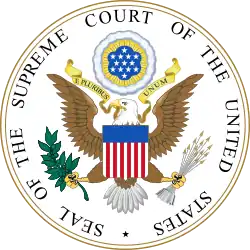| Harris v. Arizona Independent Redistricting Commission | |
|---|---|
 | |
| Argued December 8, 2015 Decided April 20, 2016 | |
| Full case name | Wesley W. Harris, et al., appellants v. Arizona Independent Redistricting Commission, et al. |
| Docket no. | 14-232 |
| Citations | 578 U.S. ___ (more) 136 S. Ct. 1301; 194 L. Ed. 2d 497 |
| Argument | Oral argument |
| Case history | |
| Prior | 993 F. Supp. 2d 1042 (D. Ariz. 2014); probable jurisdiction noted, 135 S. Ct. 2926 (2015). |
| Holding | |
| Population deviations for legislative districts predominantly reflected commission's good-faith efforts to comply with Voting Rights Act and obtain preclearance from Department of Justice. United States District Court for the District of Arizona affirmed. | |
| Court membership | |
| |
| Case opinion | |
| Majority | Breyer, joined by unanimous |
| Laws applied | |
| U.S. Const., Amdt. XIV | |
Harris v. Arizona Independent Redistricting Commission, 578 U.S. ___ (2016), was a United States Supreme Court case in which the Court held that the one person, one vote principle under the Equal Protection Clause of the Fourteenth Amendment allows a state's redistricting commission slight variances in drawing of legislative districts provided that the variance does not exceed 10 percent.[1] The Court found that the map, created by a bipartisan commission on the basis of the 2010 census, was constitutional.[2]
See also
- Evenwel v. Abbott
- Reynolds v. Sims — a United States Supreme Court case that ruled that state legislature districts had to be roughly equal in population.
References
External links
- Text of Harris v. Arizona Independent Redistricting Comm'n, 578 U.S. ___ (2016) is available from: Justia Oyez (oral argument audio) Supreme Court (slip opinion)
- Scotusblog
This article is issued from Wikipedia. The text is licensed under Creative Commons - Attribution - Sharealike. Additional terms may apply for the media files.